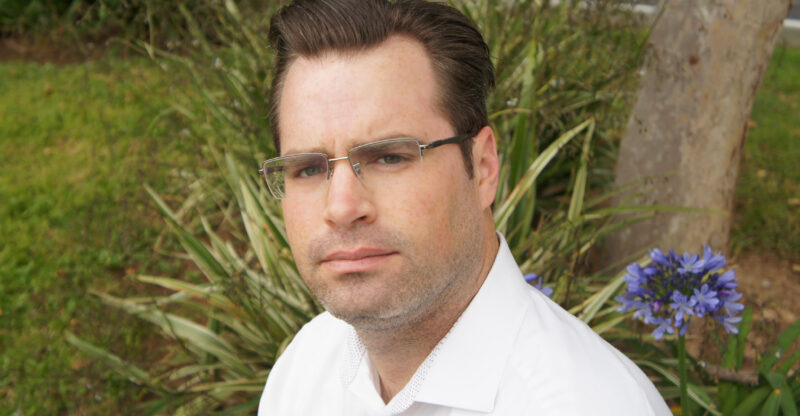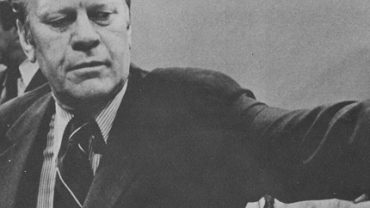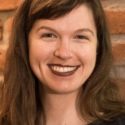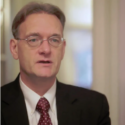The JFK Assassination: Ferrie’s Flight to Texas — An FBI Typo Yields New Clues – by James Day
James Day’s January 17, 2024, essay on Medium.com, used with permission.
An apparent error in an FBI report yields new clues and raises new questions about the antics of David Ferrie the weekend of President Kennedy’s assassination.
Ferrie — Lee Oswald’s former Civil Air Patrol mentor and a “bishop” in a network of far-right extremists — collected two young male companions, Alvin Beaubouef and Melvin Coffey, and set out for Texas from New Orleans on Friday, November 22, 1963. Ferrie drove 350 miles in his 1961 Mercury Comet blue station wagon through a blinding thunderstorm before reaching Houston about 4:30am. The trio checked into room 19 of the Alamotel, owned by Carlos Marcello. When the president was shot, Marcello was in a New Orleans courtroom on trial for defrauding the U.S. government. Ferrie joined him as a quasi-paralegal, assisting defense attorney G. Wray Gill. Marcello was acquitted.
Ferrie later said the purpose of the sojourn was meant as a weekend getaway after so taxing a trial.
As Ferrie made his mad dash west, Jack Martin was telling the New Orleans district attorney’s office and FBI that Ferrie taught Lee Oswald how to shoot with a telescopic sight, and that Ferrie was to be a getaway pilot for the assassin. Very quickly, then, David Ferrie was being sought as a person of interest by New Orleans authorities. Martin soon recanted his story, but not before being allegedly pistol-whipped by Guy Banister, in the presence of Delphine Roberts.
Ferrie later said he and his young buddies went goose hunting and ice skating with the intent of possibly buying a rink. Indeed, the trio did visit the Winterland Skating Rink in Houston, but Ferrie spent his time on the telephone, according to rink proprietor Chuck Rolland. At 11pm on Saturday, the three arrived at the Driftwood Motel in Galveston, room 117. Clerk Mary Doveri said a three minute call was placed to an Alexandria, Louisiana number — likely to Bennie Le Hann, or one of his associates, at an Alexandria motel and restaurant also owned by Marcello.
They arrived back in New Orleans on Sunday night. Ferrie voluntarily turned himself in, but was released quickly thereafter. It wasn’t until three years later when Ferrie emerged as a key figure in Jim Garrison’s assassination probe. But Ferrie died only days after that news became public. When Garrison indicted Clay Shaw on charges of conspiracy to kill the president, Ferrie was posthumously named co-conspirator.
All of this is both highly suspicious and yet does not implicate Ferrie or friends in anything nefarious. Besides, he was the kind of guy who might just undertake a journey in a time of national mourning with two men over twenty years his junior — ideal alibis in any case.
There has been much ink spilled about this quixotic trip to Houston and Galveston — Raymond Broshears said Ferrie was to be a getaway pilot for the assassin(s); was he to rendezvous with Jack Ruby associate Brock Wall? make some kind of speculation to funeral director John Liggett? wait by the phone if Ruby didn’t pull off the job? — but nothing conclusive has ever been reached. Maybe it was simply just a mere “guys night out” for ice skating aficionados, dubious as it seems.
However, the phone records from the Alamotel shed some light. During their stay on Saturday, November 23, Ferrie (or his boy pals, but likely Ferrie) made two long distance calls that are strange for someone supposedly just wanting to get away and relax: to two New Orleans radio-television studios.
Why would such innocuous calls be of any consequence?
It is important to note that in New Orleans at this time there was no WDSH Radio as the report states. There was, however, the local NBC affiliate, WDSU-TV-AM-FM — a very busy station indeed the weekend of the assassination.
3 ½ months earlier, on August 9, Lee Oswald was arrested for disturbing the peace, provoking a fight with 29-year-old Cuban exile Carlos Bringuier while passing out “Hands Off Cuba” leaflets on Canal St. as part of his Fair Play for Cuba Committee (FPCC) hijinks. A week later Oswald was handing out fliers again. This time his actions were recorded by a WDSU-TV cameraman.
Three days later, Oswald and Bringuier participated in a WDSU-AM radio debate. The other debate participant was John Birch Society member Ed Butler, executive director of INCA (Information Council of the Americas), and, as we will see, a kind of deus ex machina character in regards to Lee Oswald. After the debate, Oswald recorded a filmed interview in the WDSU-TV studio wherein he rather articulately distinguishes between Marxism and Communism while aligning himself with Marxist philosophy.
The very next day, a transcript of the radio debate was sent from WDSU to the FBI. After Oswald’s arrest on November 22, the audio-visual material of Oswald recorded at WDSU on August 21 was practically played on loop by NBC during its wall-to-wall assassination coverage. Ed Butler’s INCA later produced a record album of the Oswald/Bringuier debate: Oswald — Self-Portrait in Red. While NBC was running clips pushing the Oswald-as-Marxist narrative, Ed Butler flew from New Orleans to Washington, where he hand-delivered the debate recording to Mississippi’s James Eastland, senate chair of the committee investigating FPCC.
Three weeks after the debate back in August, Butler was again in Washington, testifying before the Subcommittee on International Organizations and Movements of the Committee of Foreign Affairs of the House of Representatives. In his testimony, first noted in Jeffrey Caufield’s General Walker and the Murder of President Kennedy, Butler revealed “he planned to train individuals — whom he referred to as ‘Conflict Managers’ — to impersonate Communists, speak their jargon, and infiltrate the Communist Party,” Caufield wrote. In this context, Oswald seems to have been following Ed Butler’s script.
CIA/FBI informant William Gaudet “felt Bringuier’s altercation with Oswald was on purpose and that Ed Butler put on the whole thing.” Moreover, Butler was part of the revolving door of individuals who frequented Guy Banister’s New Orleans office at this time.
During the hectic assassination coverage, another guest came on WDSU only a few hours after Oswald’s arrest — Kerry Thornley. Thornley met Oswald at the Marine Corps Air Station in early 1959; Thornley was intrigued by Oswald from the outset. Later that year, he was stationed in Japan when he read of Oswald’s defection to the Soviet Union. Thornley even wrote a book based on Oswald in 1962, The Idle Warriors.

Kerry Thornley wound up in New Orleans at the same time as Oswald — the summer of 1963. Thornley seemed to “accidentally” run into a number of persons of interest: Thomas Beckham identified Thornley as another star in Banister’s constellation. Thornley met David Ferrie in 1962 and claimed his contact with him was also “accidental” and that no significant conversation transpired. In September 1963, Thornley visited Mexico City — the same month as Oswald — allegedly as a tourist.
Thornley talked about Oswald on WDSU TV, and followed up that appearance in the New Orleans States Item, in which Thornley called Oswald a “real loser” and “a little psychotic.” It was as if Thornley’s job was to smear Oswald while distancing himself from his fellow marine, because Thornley’s media appearances contradict what he told WSHO Radio program director Cliff Hall. According to Jim DiEugenio, after the WDSU interview “Thornley and Hall went out for a drink. Thornley now admitted that he had seen Oswald since the service. It was in New Orleans. Hall asked him if he knew Oswald well and he said yes he did,” DiEugenio wrote.
All of this takes us back to room 19 of the Alamotel on November 23 when Ferrie called the New Orleans stations. If the telephone calls had to do about Oswald or the assassination, why would Ferrie care? In just two days he’ll deny to authorities even knowing Lee Oswald. Or did Ferrie have more at stake than meets the eye? Was he calling both WSHO and WDSU to ensure Thornley got his time on the air to sully Lee Oswald?
After all, on the night Oswald passed out FPCC pamphlets, conveniently filmed by WDSU-TV, he was visited by another Cuban exile and Bringuier associate, Carlos Quiroga. In 1967, when Jim Garrison investigators talked with Quiroga, according to Garrison staffer Frank Klein and quoted in Dick Russell’s The Man Who Knew Too Much, “[Quiroga] believed that we were investigating the assassination of President Kennedy with relation to David Ferrie.”
Adapted in part from my book, The Mad Bishops: The Hunt for Earl Anglin James and His Assassin Brethren (2023, TrineDay)









